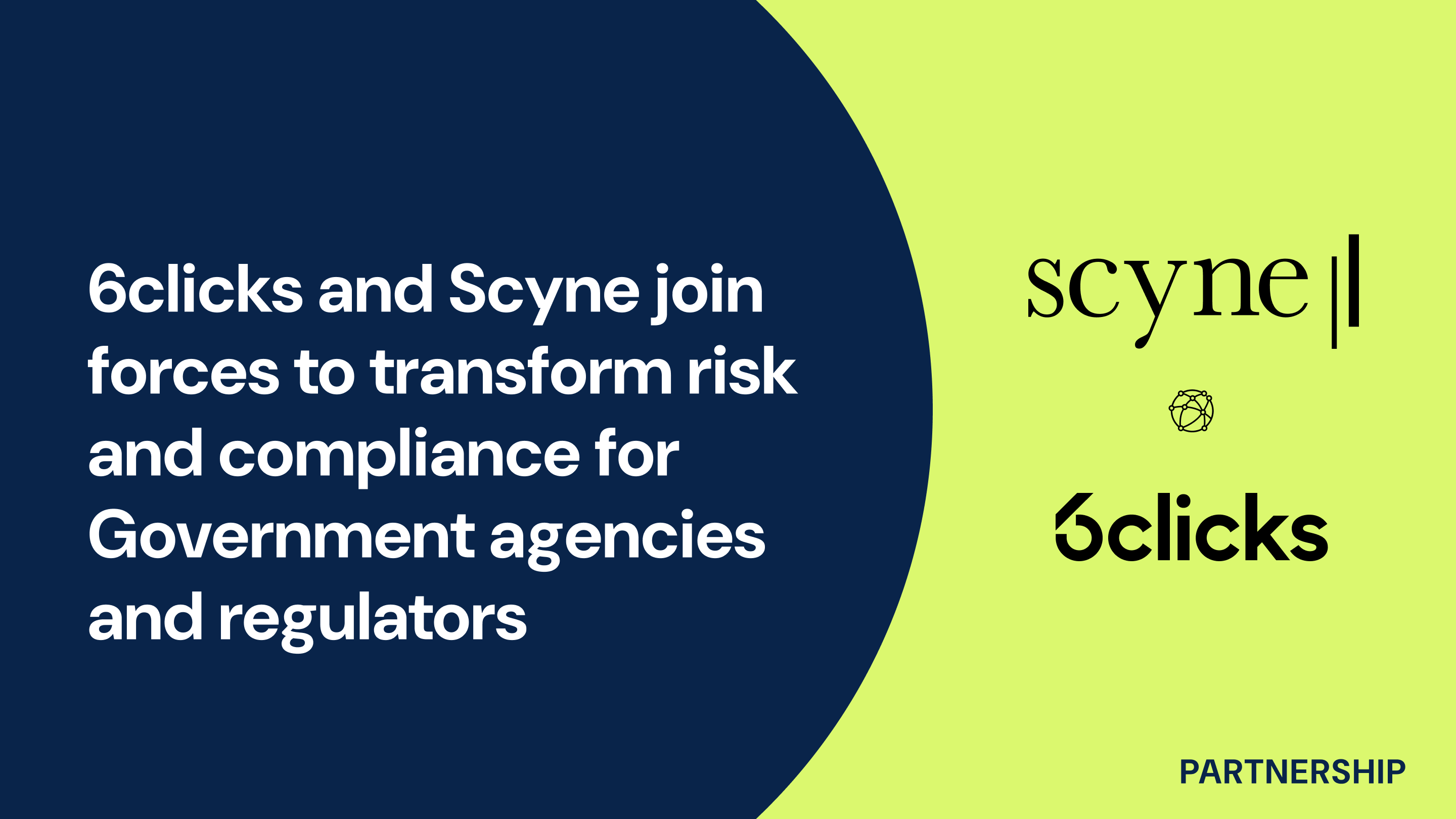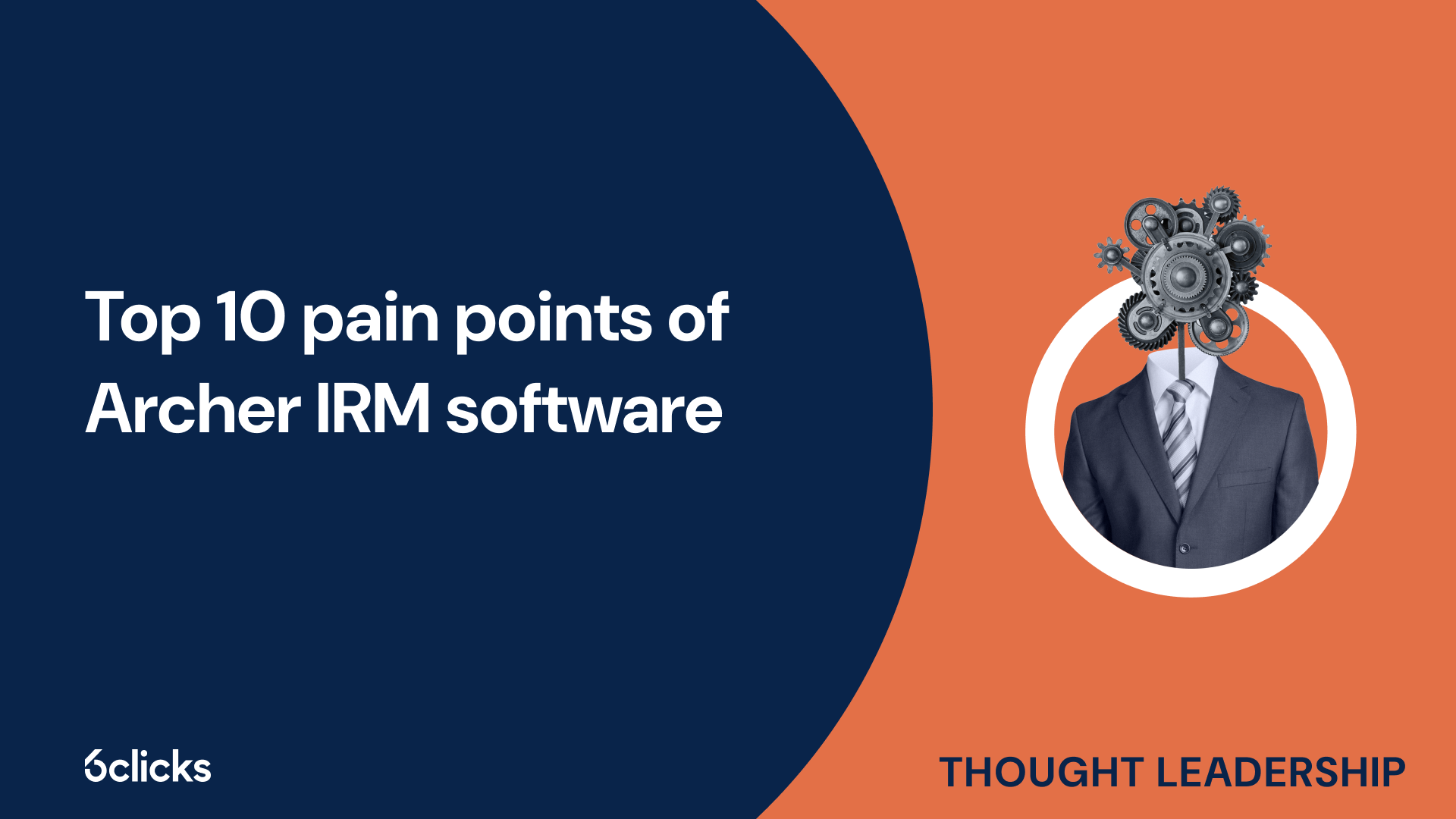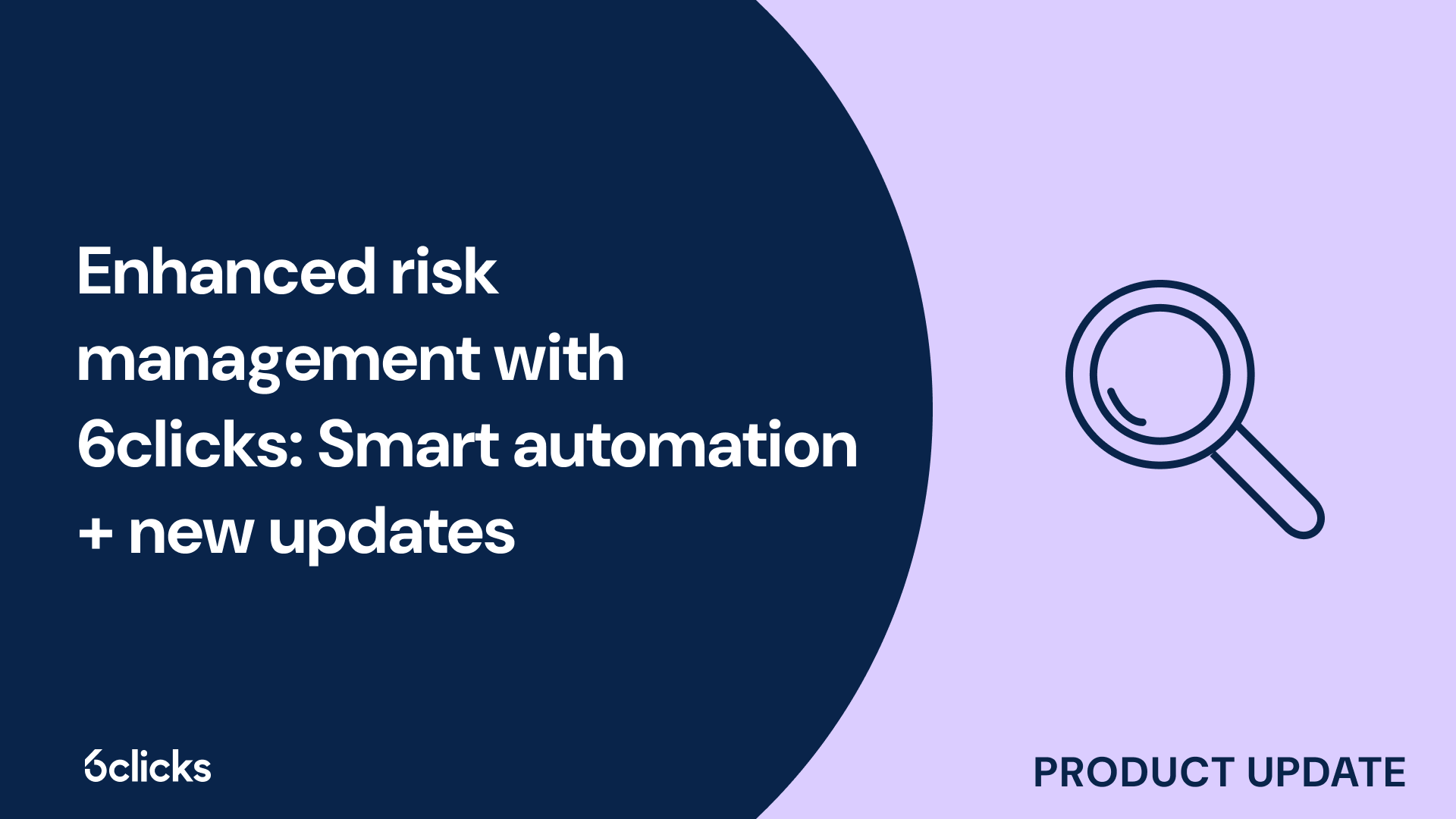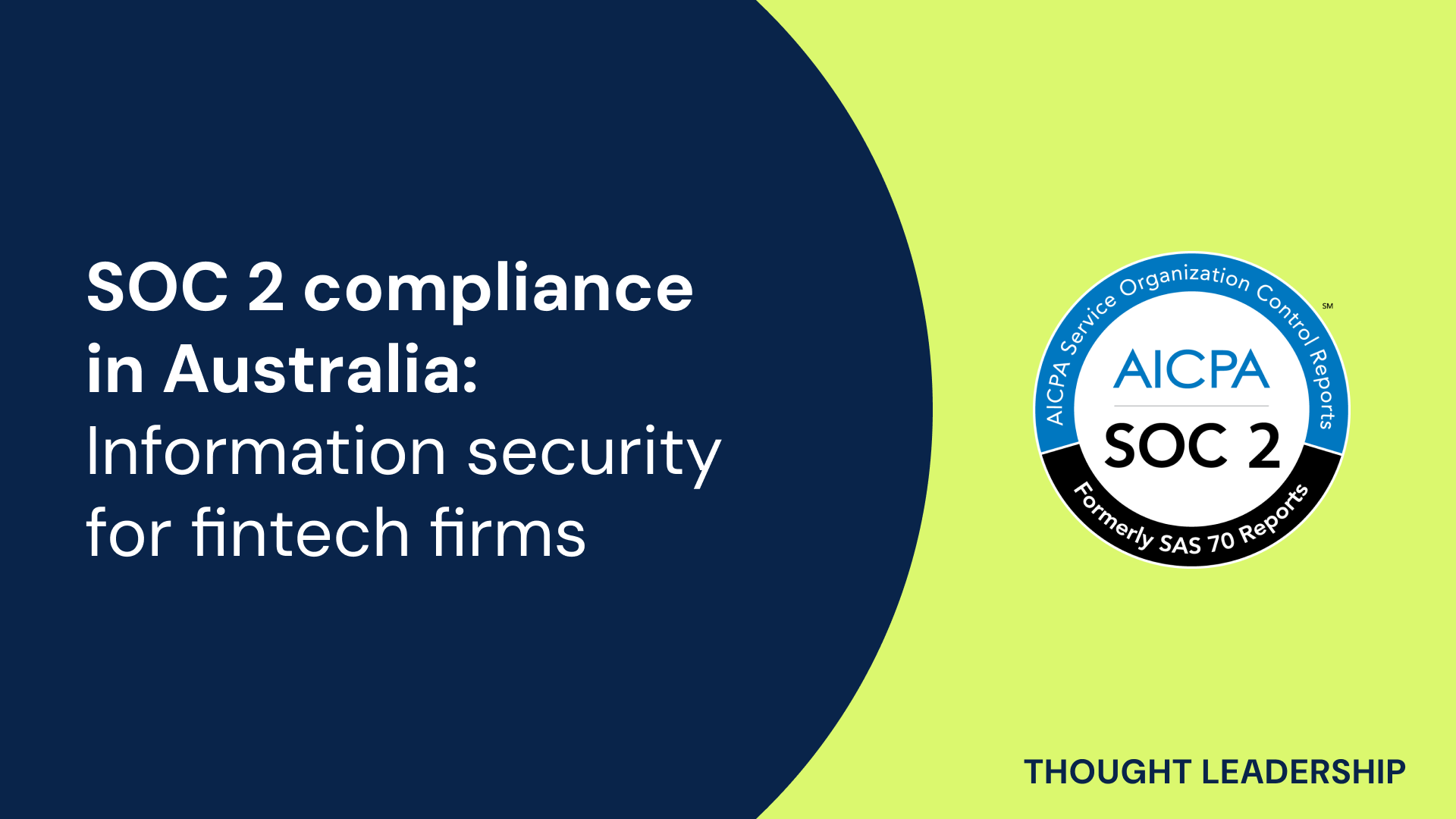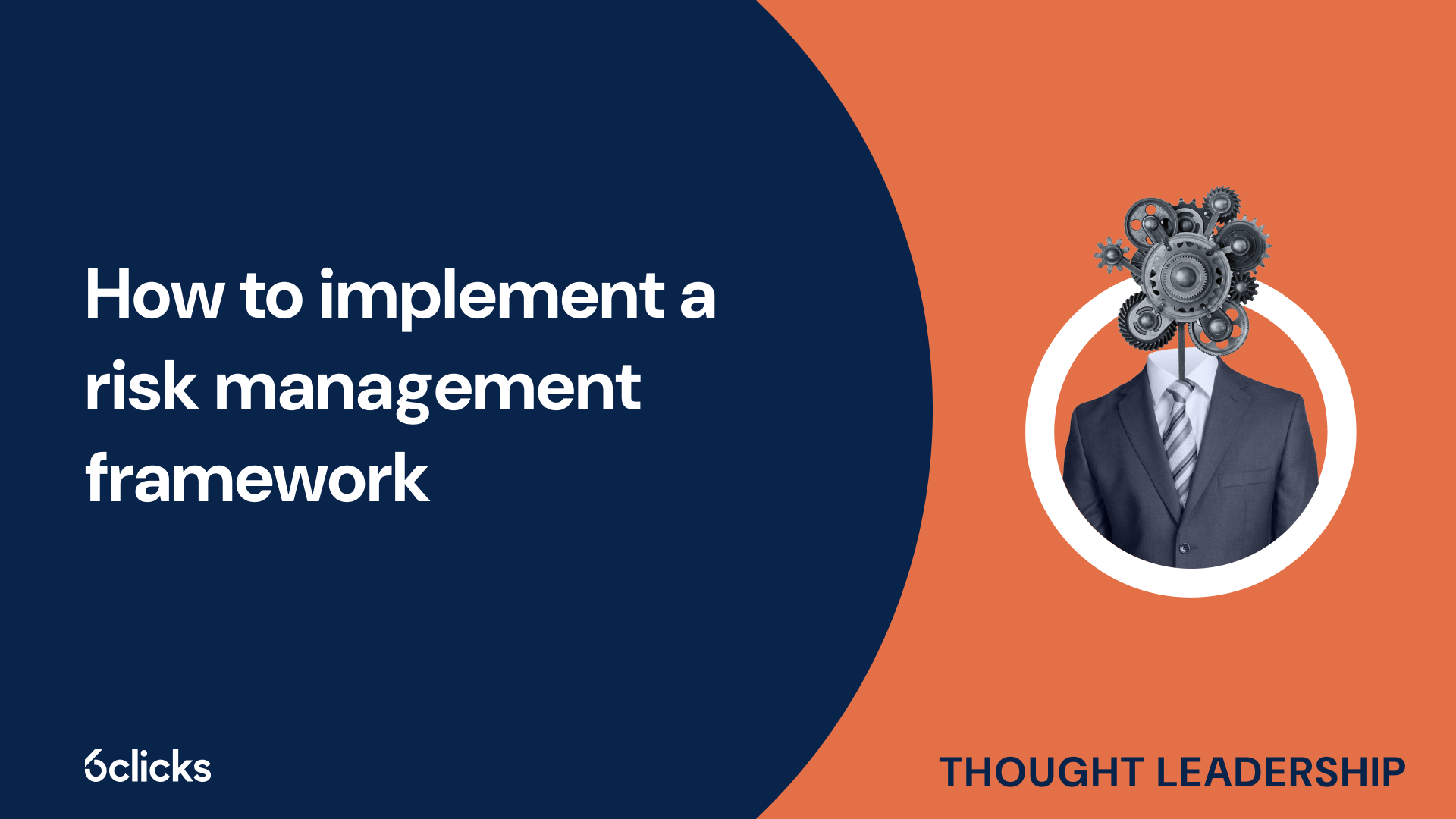The GRC buyer’s guide for 2025: Building resilience with AI-powered, federated solutions
Discover the ultimate GRC buyer's guide for 2025! Uncover how AI-powered, federated solutions transform compliance and security management for industries like government, aerospace, banking, and more. Learn about centralized control, continuous compliance, and advanced cyber GRC capabilities. Download now!
-1.png?width=200&height=249&name=Group%20193%20(1)-1.png)
The GRC buyer’s guide for 2025: Building resilience with AI-powered, federated solutions
What is HITRUST?
HITRUST, which stands for Health Information Trust Alliance, is a certifiable framework specifically designed for the healthcare industry. It provides a comprehensive and efficient approach to regulatory compliance and risk management. HITRUST incorporates a broad range of industry standards and control requirements to ensure the security of personal health information and health information systems. By adopting a risk-based approach, HITRUST enables healthcare organizations and their business associates to assess and address security risks in a systematic manner. It offers a standardized framework for assessing and certifying the security posture of healthcare entities, as well as providing third-party assurances. The HITRUST CSF (Common Security Framework) consists of control categories that scale in requirements from the lowest level up to the highest level of security implementation. HITRUST's certification process helps healthcare organizations demonstrate their readiness to comply with regulatory factors and meet the business requirements of the healthcare sector. With HITRUST, healthcare entities can establish and maintain robust security programs, reduce the risk factor associated with data breaches, and minimize indirect costs related to security incidents.
How is HITRUST different from other security frameworks?
HITRUST, or the Health Information Trust Alliance, stands out among other security frameworks for its comprehensive nature and focus on healthcare industry-specific requirements. Unlike many common security frameworks which offer a broad range of controls applicable to various industries, HITRUST CSF (Common Security Framework) is specifically tailored to address the unique challenges faced by healthcare organizations.
One key distinction of HITRUST CSF is its emphasis on compliance with HIPAA regulations. As the healthcare industry continues to grapple with ensuring the privacy and security of personal health information, HITRUST provides a standardized framework that aligns with the requirements set forth by HIPAA. This not only helps healthcare entities meet regulatory compliance, but also ensures that their security programs are robust and effective in protecting sensitive patient data.
Moreover, HITRUST goes beyond national regulations by addressing local, national, and global security measures. Recognizing that healthcare organizations operate in an interconnected digital landscape, HITRUST provides a comprehensive approach to managing security risks. It incorporates control requirements from various industry standards and regulations, offering a certifiable framework that covers a wide range of security factors.
Understanding HITRUST requirements
HITRUST, which stands for Health Information Trust Alliance, is an organization that offers a comprehensive approach to managing security risks in the healthcare industry. Their HITRUST CSF (Common Security Framework) provides a standardized framework that aligns with HIPAA regulations and addresses local, national, and global security measures. This certification process not only helps healthcare organizations meet regulatory compliance, but also ensures the effectiveness and robustness of their security programs. By incorporating control requirements from various industry standards and regulations, HITRUST offers a certifiable framework that covers a wide range of security factors. This allows healthcare entities to confidently protect sensitive patient data and demonstrate their commitment to data privacy and security.
Common security framework (CSF)
The Common Security Framework (CSF) is a core component of the HITRUST CSF certification and serves as a certifiable and foundational standard for organizations in the healthcare industry. The CSF provides a comprehensive approach to regulatory compliance and risk management, addressing the unique challenges faced by healthcare organizations.
The CSF is divided into 19 different domains, each of which focuses on a specific area of security and control objectives. These domains include Information Protection Program, Mobile Device Security, Network Protection, Risk Management, and Data Protection & Privacy, among others. By addressing these domains, healthcare entities can ensure the security and protection of personal health information and health information systems.
As healthcare providers, business associates, and healthcare companies aim for regulatory compliance, HITRUST's CSF certification process offers an efficient approach. With the CSF's control categories and implementation levels, organizations can scale their controls based on risk factors. Implementing the CSF and achieving certification not only mitigates security risks but also helps organizations meet regulatory requirements and industry standards.
The CSF's widespread adoption and use across the healthcare sector provide a standardized framework for assessing the security posture of healthcare organizations. Through readiness assessments and risk assessments, organizations can identify weaknesses in their security programs and improve their overall security posture.
Control objectives and requirements
HITRUST's control objectives and requirements outline the necessary cybersecurity practices for healthcare organizations to protect personal health information and ensure the security of health information systems.
Each control domain within the HITRUST CSF consists of control objectives that define broad cybersecurity goals. These objectives are then further broken down into specific controls that mandate tasks to achieve those goals.
For example, in the 'Access Control' control domain, one control objective may be to 'implement access controls to prevent unauthorized access to sensitive data.' This objective can be achieved through controls such as 'user access management' and 'multi-factor authentication.'
The requirements within each control may vary based on the organization's size and risk levels. Larger organizations may have more complex control requirements to manage their higher volume of data and potential risks. Similarly, organizations with a higher risk level, such as those dealing with sensitive patient information, may have stricter control requirements to ensure the utmost security.
By following these control objectives and requirements, healthcare organizations can meet regulatory compliance, mitigate security risks, and protect the confidentiality, integrity, and availability of sensitive healthcare data.
Healthcare industry standards and regulations
Healthcare organizations are subject to numerous industry standards and regulations that are relevant to HITRUST requirements. These standards and regulations play a crucial role in the implementation of HITRUST controls within healthcare organizations and ultimately impact their ability to achieve HITRUST certification.
To meet HITRUST requirements, healthcare organizations must comply with various standards and regulations, such as the Health Insurance Portability and Accountability Act (HIPAA), the Health Information Technology for Economic and Clinical Health Act (HITECH), the National Institute of Standards and Technology (NIST) Cybersecurity Framework, and the European Union's General Data Protection Regulation (GDPR).
These standards and regulations provide guidelines and requirements for the protection of sensitive personal health information, the establishment of robust risk management programs, and the implementation of appropriate security controls. They address areas such as access control, risk assessment, data breach notification, data encryption, employee training, incident response, and disaster recovery, among others.
Understanding and adhering to these standards and regulations is of utmost importance for healthcare organizations seeking HITRUST certification. Compliance with industry standards and regulations ensures that the necessary security controls and processes are in place to safeguard personal health information and mitigate risks. It demonstrates a commitment to protecting patient data and builds trust with stakeholders, including patients, business associates, and regulatory authorities.
By aligning with these healthcare industry standards and regulations, organizations can establish a solid foundation for HITRUST certification and demonstrate their capability to implement and maintain robust security programs.
Privacy and protection of personal health information
Privacy and protection of personal health information are paramount in the HITRUST framework. HITRUST recognizes the sensitivity and confidential nature of healthcare data and has developed a comprehensive approach to ensure its security while allowing for safe sharing within healthcare organizations.
HITRUST's comprehensive approach enables healthcare organizations to identify, assess, and mitigate privacy and security risks related to personal health information. It provides a standardized framework for implementing and managing security controls to safeguard this sensitive data.
HITRUST offers a wide range of tools and solutions to support healthcare organizations in their privacy and protection efforts. These include antivirus software to detect and prevent malware attacks, secure managed file transfer technology to securely exchange data, data classification solutions to categorize and protect sensitive information, data loss prevention solutions to prevent the unauthorized disclosure of data, and digital rights management solutions to control access to and usage of personal health information.
By adhering to the HITRUST framework and implementing these tools, healthcare organizations can ensure the privacy and protection of personal health information. This not only helps comply with regulatory requirements but also builds trust with patients and stakeholders, fostering a safe and secure environment for healthcare data across the industry.
HITRUST certification process
HITRUST certification process is a rigorous system that helps healthcare organizations attain regulatory compliance and meet the security requirements specific to the healthcare industry. The process involves a comprehensive assessment of an organization's security posture, control objectives, and risk management practices. HITRUST's certifiable framework encompasses a wide array of control requirements, which are categorized and scaled based on the organization's risk factor. This approach ensures that each healthcare entity can tailor their security programs to meet the specific needs of their business and ensure the protection of personal health information. Through the HITRUST certification process, healthcare organizations can confidently demonstrate their adherence to industry standards and provide third-party assurances of their commitment to safeguarding patient data. By adopting a risk-based and efficient approach, HITRUST enables broad adoption of health information security standards and helps healthcare providers and business associates mitigate the risks and indirect costs associated with data breaches and non-compliance.
Preparing for certification
Preparing for HITRUST certification involves several steps and meeting specific requirements to ensure compliance in the healthcare industry. One of the essential aspects of the process is hiring an external assessor firm that understands the business and industry. These firms possess the expertise to assess the organization's security controls and measures effectively.
Before beginning the certification process, healthcare organizations need to assess their current security posture and identify any gaps or vulnerabilities. This involves conducting a comprehensive risk assessment and implementing risk management strategies to mitigate potential threats. Organizations should also establish control objectives based on the HITRUST Common Security Framework (CSF).
To streamline the certification process, healthcare entities need to implement and document control requirements outlined by the CSF. This requires aligning with industry standards and regulatory compliance factors. By incorporating a risk-based approach, organizations can develop efficient security programs that effectively address potential security risks.
The duration of the certification process can vary depending on several factors. These include the organization's readiness for certification, the complexity of its health information systems, and the scope of the assessment process. Factors such as the number of control categories to be addressed and the organization's implementation levels can also impact the timeline.
Once the preparation is complete, organizations can engage with the HITRUST Alliance, a governing body that conducts audits and issues the HITRUST CSF certificate. The HITRUST CSF serves as a standardized framework for evaluating and certifying healthcare organizations' compliance with various security standards.



